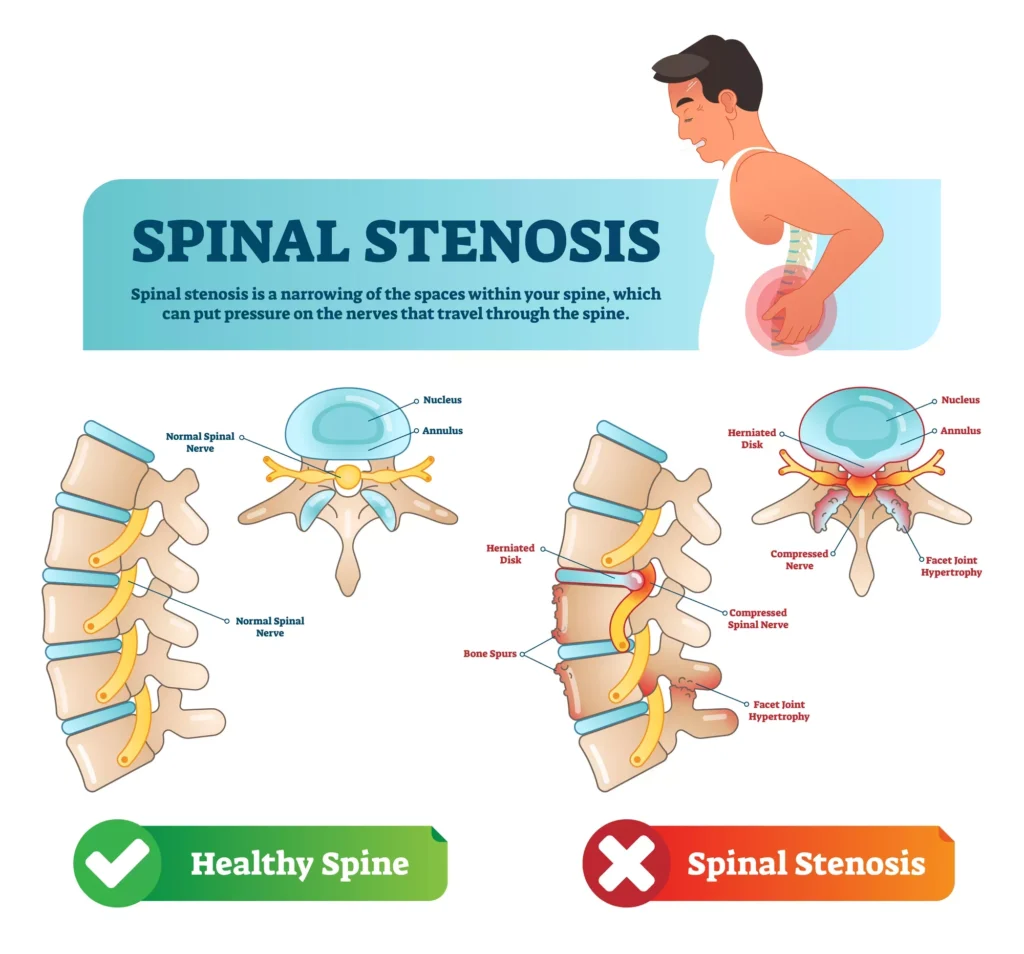Spinal Stenosis
Back pain in the elderly population can significantly impact quality of life and functional capacity. 1 Advanced degeneration of spinal structures often contributes to debilitating symptoms. This article will examine the complexities of back pain in older adults, with a focus on spinal stenosis, herniated discs, and other contributing factors.

Degenerative Changes and Spinal Stenosis
The aging process inevitably leads to degenerative changes in the spinal structures. This natural progression can result in spinal stenosis, a condition characterized by the narrowing of the spinal canal. As vertebral degeneration advances, the encroachment upon the spinal canal may impinge upon nerve roots, leading to radicular pain, weakness, and functional limitations. The clinical presentation often involves not only localized back pain but also radiating pain and paresthesia in the lower extremities, potentially causing significant disruption to mobility and quality of life.
Intervertebral Disc Herniation
Intervertebral disc herniation is a prevalent condition in the adult population, with increased incidence observed in older individuals. Herniation occurs when the nucleus pulposus, the gelatinous inner core of the intervertebral disc, protrudes through a tear in the annulus fibrosus, the outer fibrous ring. This protrusion can impinge upon adjacent nerve roots, leading to radicular pain, commonly known as sciatica. Accurate differentiation between localized back pain and radicular pain is essential for effective management.
Therapeutic Role of Exercise
While intervertebral disc herniation can be a source of significant discomfort, it is important to recognize that the mere presence of a herniated disc does not invariably correlate with pain. Many individuals with asymptomatic disc herniations remain unaware of their condition. Symptoms typically arise when the herniated disc material compresses or irritates a nerve root.
A key challenge in managing patients with disc herniation is emphasizing the importance of therapeutic exercise. Contrary to common misconceptions, exercise plays a vital role in strengthening supporting musculature, improving spinal stability, and promoting functional recovery. A comprehensive treatment approach often involves a combination of medical management and targeted exercise programs tailored to the individual’s specific needs and limitations.
Osteoporosis and Vertebral Fractures
Osteoporosis, a prevalent condition in older adults, significantly increases the risk of fragility fractures. This bone-thinning disease weakens the vertebrae, making them susceptible to fractures even with minimal trauma. Everyday activities like bending or lifting can place enough stress on the spine to cause a vertebral compression fracture.
In elderly patients presenting with severe back pain, particularly those over 70, the possibility of a vertebral fracture should be considered, even in the absence of a significant fall or injury. Early diagnosis and appropriate management are crucial to minimize pain, prevent further complications, and maintain quality of life.
The Multifaceted Nature of Back Pain in Older Adults
Managing back pain in the elderly requires a comprehensive and individualized approach. From degenerative conditions like spinal stenosis to osteoporosis-related fractures, each case presents unique challenges. A thorough evaluation, including a detailed medical history, physical examination, and imaging studies, is essential to determine the underlying cause and guide treatment decisions.


0 Comments